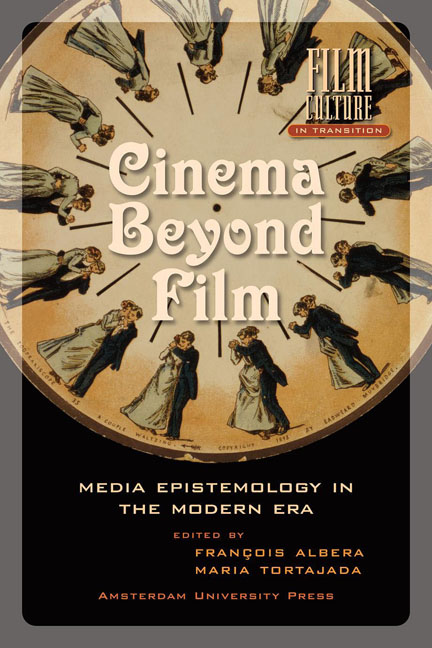On the Singular Status of the Human Voice: Tomorrow’s Eve and the Cultural Series of Talking Machines
Published online by Cambridge University Press: 22 January 2021
Summary
The cinema was far from being the first ‘talking machine’ used for putting on shows. The talking component is part and parcel of a long line of technical inventions and discourses about the audiovisual representation of man. The term itself underlines the preponderant role given to the word – the true ‘subject’ of talkies being located in the talking Subject her/himself, as Jean-Louis Comolli has noted. The talking element has fostered an anthropomorphic mimetism, which is comparable in its principles to the mimetism underlying both the manufacturing of automata with human faces and some of the ways phonographic techniques are used. Rick Altman has written about the phase in which talking was generalised: ‘nearly every important technological innovation can be traced to the desire to produce persuasive illusion of real people speaking real words’. James Lastra has noted that when analysing the writings of Hollywood technicians at that time, ‘all sounds were ultimately recognized to be functionally subordinate to the voice’. Even if in science, as Jonathan Sterne underlines, a movement of subordination of the voice to the more general category of ‘sounds’ can be observed from the 19th century onwards, the primacy of the talking element has been perpetuated in audiovisual representations, implying all the phases of sound manufacturing in the cinema, from their recording to their projection in halls. It is against this background that I shall address the conditions that have contributed to the emergence of a conception of the relations between sound and visual representations, where the dominant parameter is voice-lip synchronism. When one examines the possible combinations (exemplified in the ‘installations’ of contemporary artists), it becomes clear that institutionalised talking cinema can profit from being set within a wider technological spectrum belonging to the cultural series of talking machines. From a methodological point of view, this conception allows us to free historical study from the requirements of periodisation, for if one series may be derived from another series, it may also echo it at a distance or develop in parallel to neighbouring series. Reciprocal influence may occur as a result of a spatial contiguity (when, for example, two techniques are presented at the same exhibition) that is itself subject to considerable diachronic variations and various contingencies, as it results from practices that have not been laid down and fixed.
- Type
- Chapter
- Information
- Cinema Beyond FilmMedia Epistemology in the Modern Era, pp. 233 - 252Publisher: Amsterdam University PressPrint publication year: 2012



